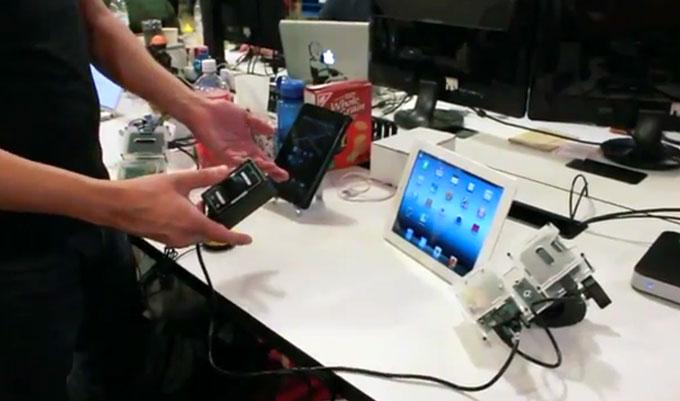By Jeff Lagerquist
Nodding her head, Carolyn Pioro sends a text message on her Samsung Galaxy Note, a much needed upgrade from her outdated cell phone and earpiece.
Using the same controls that pilot her wheelchair, she selects the next letter as the cursor automatically scrolls each character on the keyboard.
An accomplished trampolinist and circus performer, Pioro suffered a severe spinal cord injury while rehearsing for a performance in 2005. She landed on her head and neck when her trapeze mate couldn’t catch her.
The fall left her without feeling or mobility below her shoulders.
While the world embraced the wave of smartphone and tablet technology, Pioro was left behind.
“A lot of times you’re cut off from aspects of society because you can’t get into a particular building, but there was a whole smartphone culture that everyone is in sync with that. I was an outsider to that until now,” said the 33-year-old graduate of the Chang School’s magazine and web publishing program.
Komodo OpenLab, born from Ryerson’s Digital Media Zone (DMZ), has developed a product that allows those who lack conventional dexterity to take control of the latest smartphones and tablets using input from wheelchair driving controls and other sensors they already own and use.
“Think about how many things we do on our smartphones. We have an endless amount of information and entertainment at out fingertips.
For people with no access to printed material or a universal remote, it’s a big deal,” said Mauricio Meza, one of the company’s co-founders.
The Tecla Shield’s hardware, contained in a small case, attaches to a user’s mobility device and uses a Bluetooth interface to connect to any iOS or Android device. Four hundred have been sold in the year since the Tecal Shield hit the market.
Silicon Valley insiders touring the DMZ noticed the start-up in the early stages and helped foster partnerships with both Apple and Google.
Komodo is also looking to partner with Canadian wireless carriers to increase the company’s exposure.
Komodo’s “not-just-for-profit” model means that while they anticipate significant profits, the company will keep costs to consumers as low as possible. Price tags on assistive products are usually double or triple their consumer equivalent at Future Shop or Best Buy.
“Anything labeled medical or for use by someone with a disability means the prices are going to be crazy jacked up,” said Pioro. “I was using a speaker phone that cost around $400, and the device that I use for controlling the lights in my apartment, that seems like it was made in the 1970s, cost over $700.”
By comparison, Apple’s $399 iPad looks like a bargain. The problem is that in order to qualify for government assistance, a product has to be designed for rehab purposes from the ground up.
“Companies have to go out of their way to redesign something that already exists in the market place to make it more rehab oriented to be able to fulfill the requirements of various government assistance programs,” said Meza.
Komodo’s partnerships with notorious rivals Google and Apple help ensure the user experience remains as seamless as possible and keeps up with the rapid release of apps. The next generation iOS Tecla Shield will likely wear the coveted “made for Apple” badge.
The company is confident about sales in the year ahead as legislation passed by the U.S. Senate, namely The 21st Century Accessibility Act, begin to take effect.
The “not-just-for-profit” company is already in the black.
“It pretty much says that every device that connects to the Internet has to be assessable. When that comes in, wireless manufacturers will have to prove that their devices comply. Our product is that solution,” said Meza.
For Tecla Shield users now able to tweet, text, and talk their way into a full-blow smartphone obsession, the reception has been resoundingly positive.
“It’s got my back. Now I’ve got so many outlets to communicate with the world. That’s incredibly important for people with injuries and disabilities. When I’m out, or alone, it’s really great to have that,” said Pioro.
[youtube]http://www.youtube.com/watch?v=oth62xhtxFQ[/youtube]










Leave a Reply